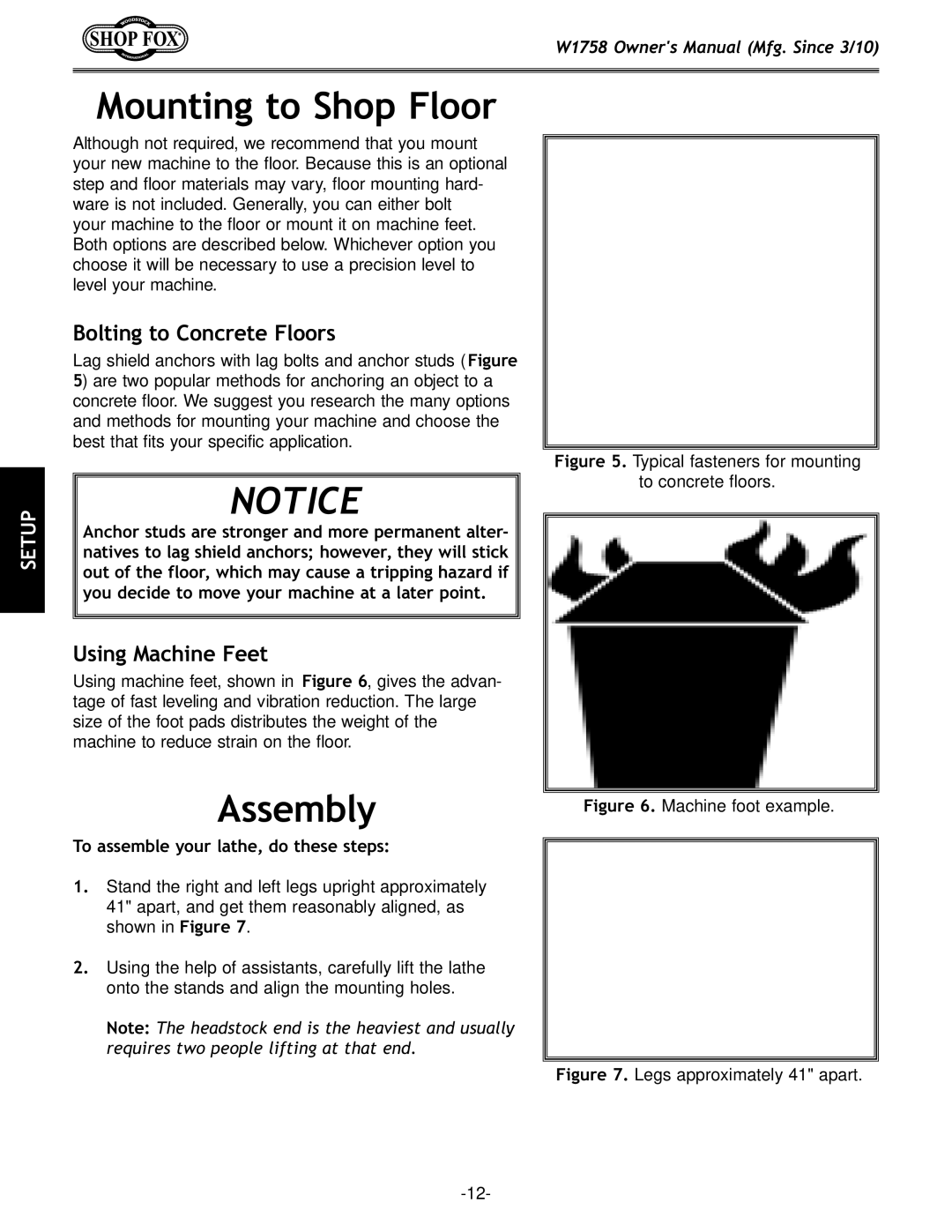
W1758 Owner's Manual (Mfg. Since 3/10)
Mounting to Shop Floor
SETUP
Although not required, we recommend that you mount your new machine to the floor. Because this is an optional step and floor materials may vary, floor mounting hard- ware is not included. Generally, you can either bolt your machine to the floor or mount it on machine feet. Both options are described below. Whichever option you choose it will be necessary to use a precision level to level your machine.
Bolting to Concrete Floors
Lag shield anchors with lag bolts and anchor studs (Figure 5) are two popular methods for anchoring an object to a concrete floor. We suggest you research the many options and methods for mounting your machine and choose the best that fits your specific application.
NOTICE
Anchor studs are stronger and more permanent alter- natives to lag shield anchors; however, they will stick out of the floor, which may cause a tripping hazard if you decide to move your machine at a later point.
Using Machine Feet
Using machine feet, shown in Figure 6, gives the advan- tage of fast leveling and vibration reduction. The large size of the foot pads distributes the weight of the machine to reduce strain on the floor.
Assembly
To assemble your lathe, do these steps:
1.Stand the right and left legs upright approximately 41" apart, and get them reasonably aligned, as shown in Figure 7.
2.Using the help of assistants, carefully lift the lathe onto the stands and align the mounting holes.
Note: The headstock end is the heaviest and usually requires two people lifting at that end.
